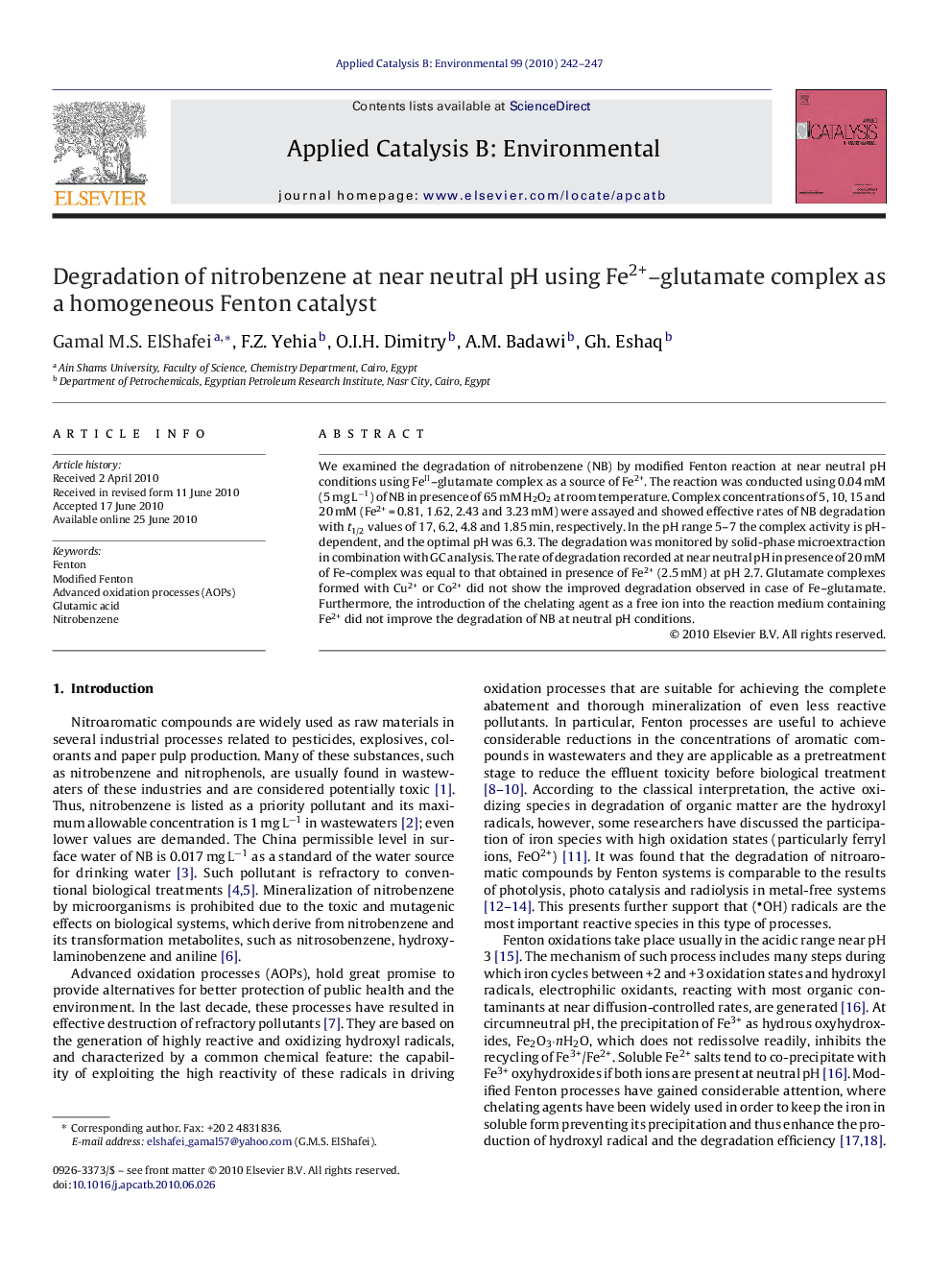| Article ID | Journal | Published Year | Pages | File Type |
|---|---|---|---|---|
| 47233 | Applied Catalysis B: Environmental | 2010 | 6 Pages |
We examined the degradation of nitrobenzene (NB) by modified Fenton reaction at near neutral pH conditions using FeII–glutamate complex as a source of Fe2+. The reaction was conducted using 0.04 mM (5 mg L−1) of NB in presence of 65 mM H2O2 at room temperature. Complex concentrations of 5, 10, 15 and 20 mM (Fe2+ = 0.81, 1.62, 2.43 and 3.23 mM) were assayed and showed effective rates of NB degradation with t1/2 values of 17, 6.2, 4.8 and 1.85 min, respectively. In the pH range 5–7 the complex activity is pH-dependent, and the optimal pH was 6.3. The degradation was monitored by solid-phase microextraction in combination with GC analysis. The rate of degradation recorded at near neutral pH in presence of 20 mM of Fe-complex was equal to that obtained in presence of Fe2+ (2.5 mM) at pH 2.7. Glutamate complexes formed with Cu2+ or Co2+ did not show the improved degradation observed in case of Fe–glutamate. Furthermore, the introduction of the chelating agent as a free ion into the reaction medium containing Fe2+ did not improve the degradation of NB at neutral pH conditions.
Graphical abstractComplex concentrations of 5, 10, 15 and 20 mM (Fe2+ = 0.81, 1.62, 2.43 and 3.23 mM) were assayed and showed effective rates of NB degradation with t1/2 values of 17, 6.2, 4.8 and 1.85 min, respectively.Figure optionsDownload full-size imageDownload as PowerPoint slide
